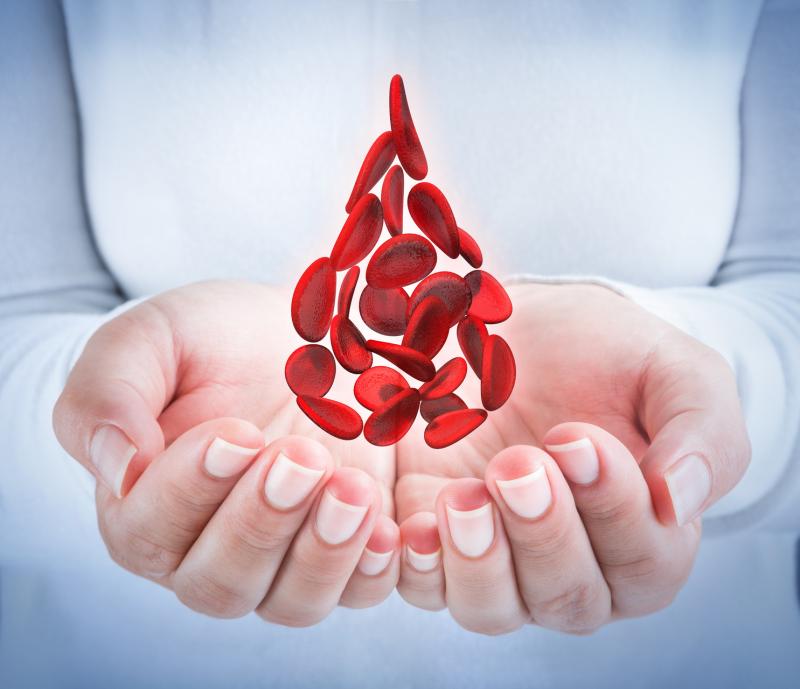
Two phase II trials of once-daily concizumab injections for bleeding prophylaxis do not disappoint, with the drug shown to be both safe and effective in haemophilia A (HA) and haemophilia A/B with inhibitors (HAwI/HBwI).
Presented at the 61st Annual Meeting of the American Society of Hematology (ASH 2019), the 24-week results “support the use of concizumab as a safe and well-tolerated subcutaneously administered prophylactic therapy in all patients with haemophilia, regardless of inhibitor status, and including patients with HBwI who represent a vulnerable and particularly rare patient population, and for whom the use of a novel agent could significantly improve care,” according to the explorer4 and explorer5 investigators, led by Amy Shapiro from the Indiana Hemophilia & Thrombosis Center in the US and by Hermann Eichler from the Saarland University and University Hospital in Germany, respectively.
The trial population included male patients with haemophilia A or B and documented history of high-titre inhibitors (explorer4: HAwI, n=16; HBwI, n=10) and those with severe haemophilia A without inhibitors (explorer5: n=36). The noninhibitor trial did not include patients with the B subtype, as the effect of concizumab in this population is predicted to be similar to that in those with haemophilia A without inhibitors, the investigators explained.
Both trials evaluated the effect of daily subcutaneous concizumab injections at a dose of 0.15 mg/kg. Patients underwent potential dose escalation to 0.20 and 0.25 mg/kg in the event of ≥3 spontaneous bleeding episodes within the preceding 12 weeks of treatment. A loading dose of 0.5 mg/kg was administered as the first dose in only the explorer4 trial.
Shapiro and colleagues randomized 36 HAwI/HBwI patients to receive once-daily concizumab prophylaxis (n=17; mean age, 34.1 years) or recombinant activated factor VII (rFVIIa) on-demand treatment (n=9; mean age, 41.1 years) in explorer4. Meanwhile, Eichler and his team administered concizumab to all 36 HA patients (mean age, 36.9 years) enrolled in explorer5.
In explorer4, the primary efficacy endpoint of number bleeding episodes at the last dose level was markedly lower in the prophylaxis than in the on-demand treatment arm (all bleeding episodes: annualized bleeding rate [ABR], 4.5, 95 percent confidence interval [CI], 3.2−6.4 vs 20.4, 95 percent CI, 14.4−29.1; p<0.001). Compared with rFVIIa, concizumab reduced all treated bleeds by 78 percent, spontaneous bleed by 88 percent and joint bleed by 79 percent. [ASH 2019, abstract 1139]
A similar pattern of results was observed in explorer5. The estimated ABRs with concizumab were 7.0 (95 percent CI, 4.6–10.7) for all bleeding episodes, 2.5 (1.5–4.3) for spontaneous bleed and 4.9 (95 percent CI, 2.8–8.5) for joint bleed. The last dose level was 0.15 mg/kg in 21 patients (58.3 percent), 0.20 mg/kg in seven (19.4 percent) and 0.25 mg/kg for eight (22.2 percent). [ASH 2019, abstract 2417]
Overall, patients on the same dose level of concizumab showed considerably varied drug concentration in the body, with increasing drug exposure associated with lower free tissue factor pathway inhibitor (TFPI) level and normalized thrombin generation potential.
In terms of safety, none of the patients died, discontinued treatment due to an adverse event (AE) or developed thromboembolic events. Commonly reported AEs among concizumab-treated patients included nasopharyngitis; injection site bruising, haematoma or haemorrhage; and upper respiratory tract infection. These events were mild, unlikely related to the drug and were resolved by week 24. [Blood 2019;13:1973-1982]
There were no safety signals documented with concomitant use of concizumab and rFVIIa. Three patients in each of the two trials tested positive (from very-low to medium titre) for antidrug antibodies (titre range, 1–128), but with no apparent clinical effect.
“As expected, elevated prothrombin fragment 1+2 and D-dimers were observed across all concizumab dose levels, reflecting the haemostatic effect of [the drug],” the investigators noted. “All patients who completed the main 24-week part of the trial chose to continue to the [>52-week] extension part.”
Concizumab is an anti-TFPI monoclonal antibody in clinical development for the subcutaneous prophylactic treatment of haemophilia patients. Data from both inhibitor and noninhibitor trials indicate that a maintenance dose of 0.15 mg/kg is suboptimal for some patients, given that only a small percentage (13 percent) experienced zero bleeds, according to the investigators.
“When the ABR for each patient in the phase II trials was calculated based on their final dose levels, the 0.25 mg/kg dose appeared to provide the most optimal efficacy while maintaining safety, therefore, this will be the dose used in the planned phase III trials,” they added.